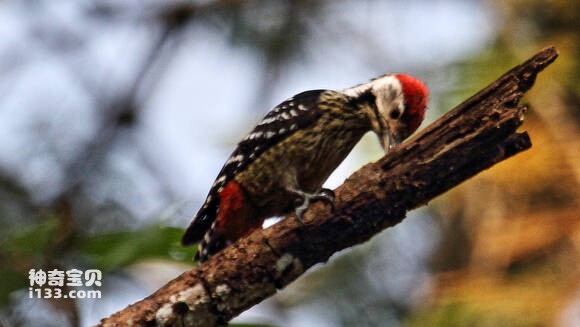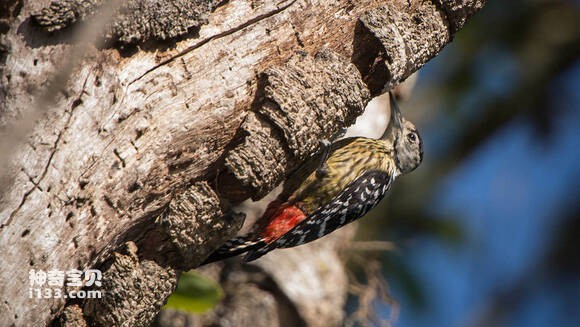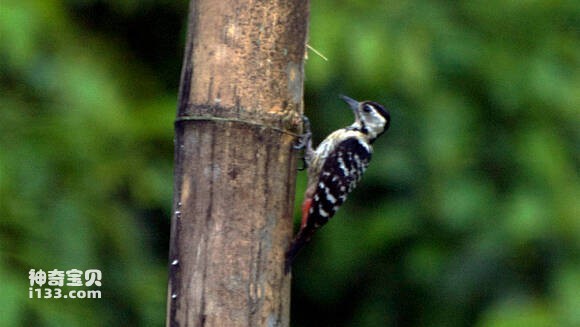Dendrocopos atratus
IUCN
LCBasic Information
Scientific classification
- name:Dendrocopos atratus
- Scientific Name:Dendrocopos atratus,Stripe-breasted woodpecker
- Outline:Climbing birds
- Family:
Vital signs
- length:18-21cm
- Weight:46-49g
- lifetime:No textual research information is available
Feature
Distribution and Habitat
Woodpeckers are distributed in the western, southern and southeastern parts of Yunnan Province, such as Yingjiang, Luxi, Simao, Xishuangbanna, Jiangcheng, Luchun and Hekou. Outside China, it ranges from northern India to eastern Burma, northwestern Thailand, Vietnam, and Laos.
Woodpecker mainly inhabits evergreen or deciduous broad-leaved forests in the low hills and foothills below 1500 meters above sea level, and also occurs in open forests and shrubland on the forest margin.
Appearance
The male woodpecker has brown forehead and red from top to back pillow. The back neck and upper back are black, with black and white stripes in the middle of the back and shoulders; The two wings are black, with black and white spots on the upper wings and flight feathers, and the two wings are approximately transversal when folded. Waist, tail covering and tail black; Lateral tail feathers with white stripes. The zygomatic line is black, extending to the posterior margin of the ear feathers; Head side, neck side, beard and upper throat white, later to tea yellow or yellow skin yellow. The throat, chest, abdomen and two sides are densely covered with black longitudinal lines; The longitudinal lines to the middle of the abdomen are fine and not obvious, and the tail is covered with red feathers.
The female woodpecker is similar to the male, but the top of the head to the back pillow is black instead of red, the same color as the upper back.
Pecker chicks are similar to the female,
Details
The striped-breasted woodpecker has two subspecies, Dendrocopos atratus and Striped-breasted woodpecker。

Woodpeckers are resident birds, often living alone or in pairs, occasionally seen in small numbers in shrublands or trees with broad leaves. It feeds mainly on ants and insects, including Coleoptera, Lepidoptera, geometridae, katydidae, Acristidae, Geometridae, moth larvae, withered leaf moth larvae, moth larvae, butterfly larvae, caterpillars, crickets, praying mantis and other insects, and occasionally eats a few berries and seeds and other plant foods. The cry is a "tchick" plosive sound and a high-pitched, falling hiss, with a strange squeaking wheeze。

The breeding season of woodpeckers is from April to May. The nest is built in the low mountains and plain broad-leaved forests below 1500 meters, but also in the trees on the edge of the farmland, the nest is built in the tree hole. Each clutch lays 4-5 eggs and the size of the eggs is 19-24 mm x 14-17.8 mm. Male and female birds incubate their eggs in turn, and young birds become late sex。

It was included in the List of Beneficial Terrestrial Wildlife under State Protection or of Important economic and scientific research Value issued by the State Forestry Administration of China on August 1, 2000.
Listed on the International Union for Conservation of Nature (IUCN) 2012 Red List of Threatened Species ver 3.1 - Not Threatened (LC).
Protect wild animals and eliminate wild meat.
Maintaining ecological balance is everyone's responsibility!








